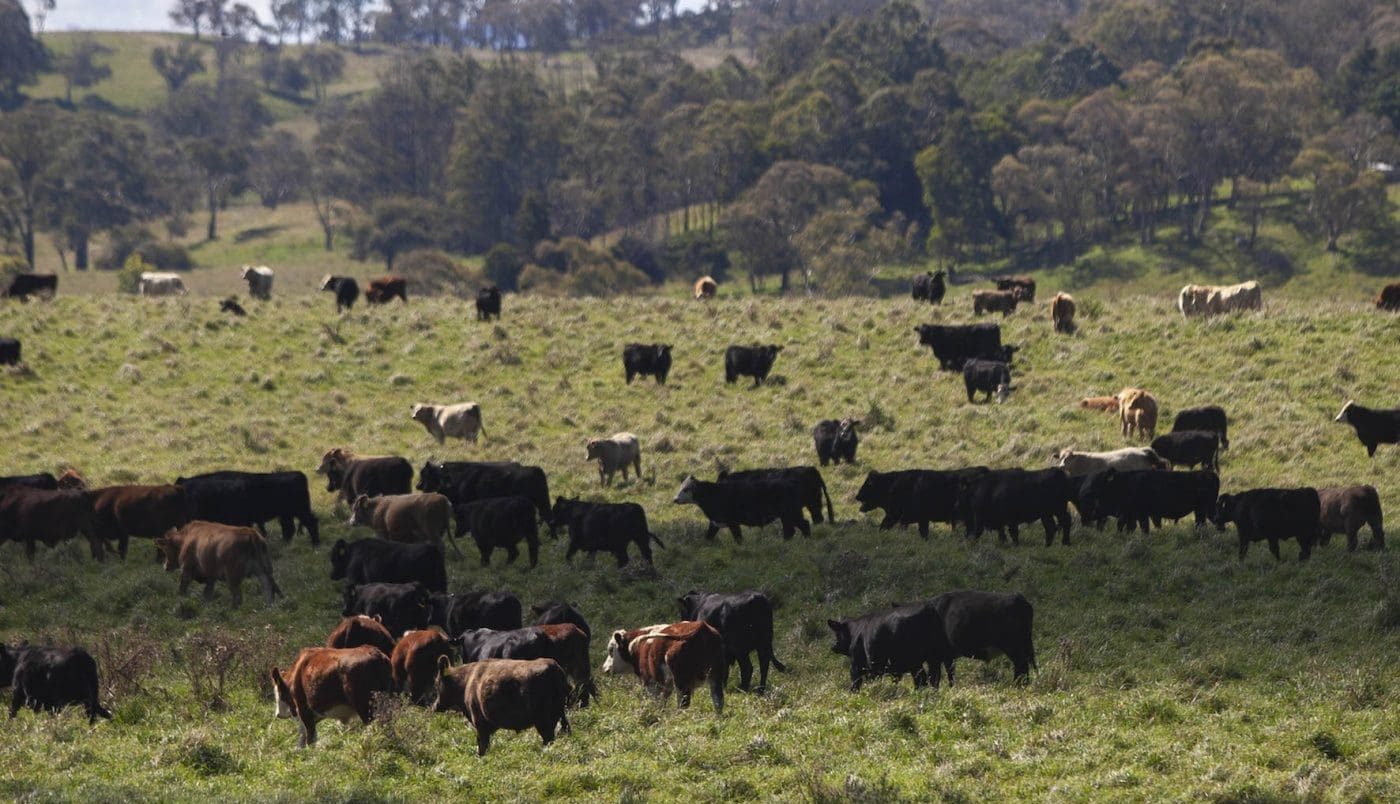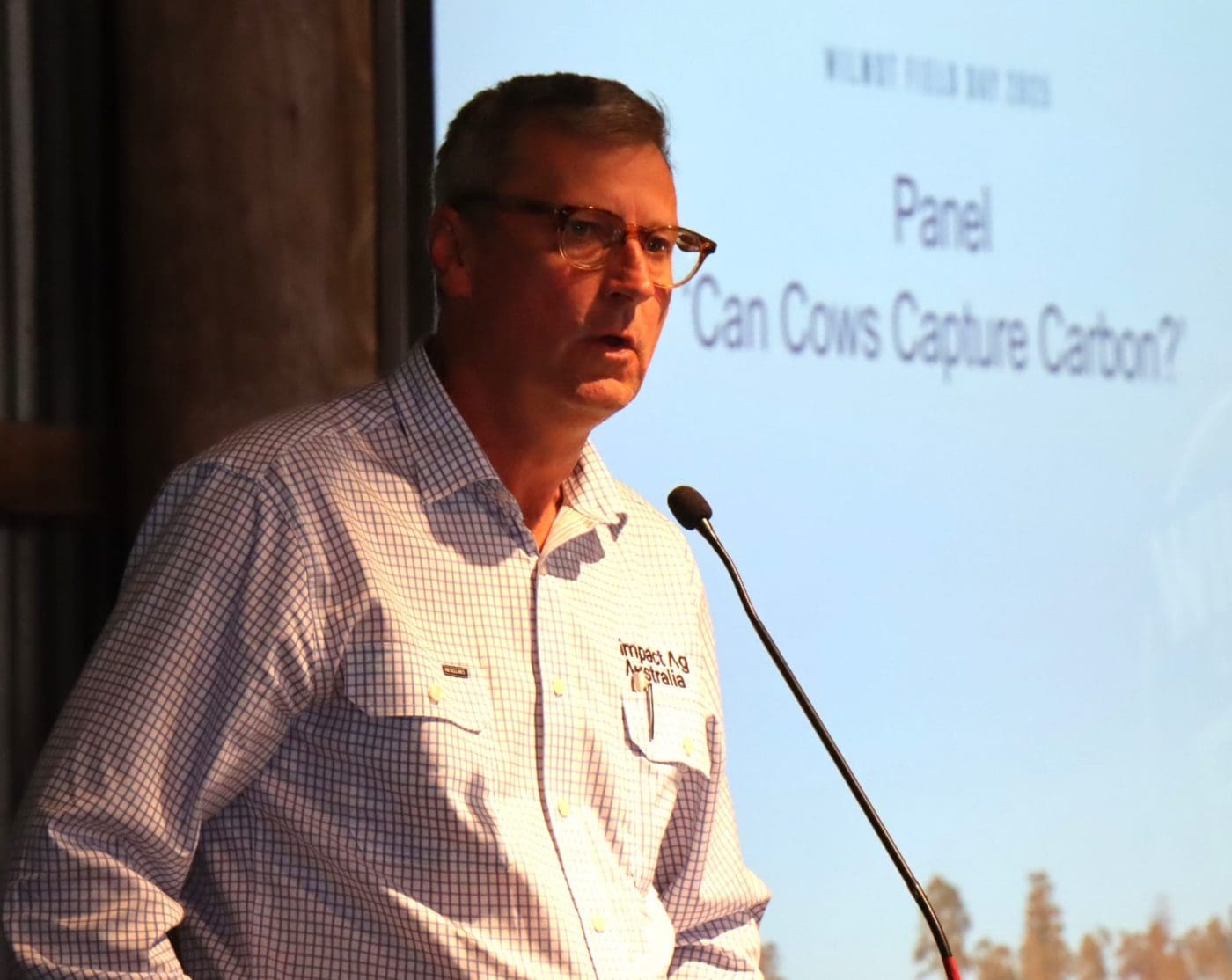
Wilmot Cattle Company stock grazing in the paddock outside of Hernani in the Northern Rivers region of NSW. Picture: Mike Terry
SITTING in the shearing shed of Wilmot Station in Northern New South Wales last week, it was clear to see the growing regenerative agriculture movement was keen to take the next step and capture the meat market.
The popular farming philosophy that Wilmot Cattle Company has been championing through its field days over the past seven years has seen a wave of publicity in recent times.
It has been captured by documentaries like Kiss the Ground, Roots So Deep and Six Inches of Soil, it has been championed by producers and corporates across the world and now is a key part of the agenda for new United States health secretary Robert F Kennedy Jr.
One of regenerative agriculture’s most well-known figures, US rancher and consultant Gabe Brown (see yesterday’s article on Gabe), says regeneratively grown meat is now commanding a significant premium.
Mr Brown runs a regenerative certification company called Regenefied, which he said is getting a 10-15pc premium over organic meat.
“The supermarket is going to be a bit less than the premium you can get direct-to-consumer, because the direct-to-consumer, those people really want it, and they do their homework on the individual farm it’s coming from,” he said.
“Whereas supermarkets, you know, a larger supply, it’ll be from a number of farms, so not quite the premium there. The restaurants we’re not seen as much unless, you get to farm to table restaurant.”
Pitching as preventative medicine
Referencing scientific work looking at the nutritional differences between regeneratively grown products and products produced through other means, Mr Brown said meat should effectively be marketed like preventative medicine.
“All of us want to feed our children nutrient dense food, correct? We all want clean air. We want clean water. We want to reverse climate change. We want better water quality, right? And the list goes on and on,” he said,
“Regenerative agriculture ticks all of those boxes, at least to some degree. So, my challenge to you today, are you going to be one that’s going down this path? Because this science is coming, and we have a whole faction of the medical community that’s extremely interested.
“I spend the vast majority of my time now talking to CEOs, board of directors, heads of sustainability, because they’re hearing it from the consumer.”
Regenerative meat still a niche product
According to American meat marketing advisory Midan Marketing, the buzz about regenerative agriculture has some substance. It highlighted a report from an organisation called SPINS, which showed 39pc year-on-year increase in products claiming “certified regenerative organic” and a decline in other sustainability claims.
Meat & Livestock Australia’s Joe McMeniman said speaking to others in market research roles, they were seeing a rise in people looking for soil health and biodiversity credentials – which he said could be interesting for further research.
Some Australian brands have been marketing meat with regenerative claims, such as Paradigm Foods’ Roots Regenerative brand, Arcadian Organic’s domestic brand Cleavers has a certified organic regenerative and the Hughes family’s Rangeland Quality Meats.
Processing bottleneck for naturally raised animals
Impact Ag chief executive officer Hugh Killen told a panel at Wilmot that a lot of cattle in Australia are being produced using the regenerative grazing methods without it being separated in the end market. He said he was working on a naturally raised beef brand.
“I have one investor that is willing to invest, we need to be able to produce between 15,000 and 20,000 head/year to make it profitable and we can’t get the kill spots to make that happen,” he said.
“We might be drawing down the carbon, thinking about natural capital and want to get this nutritious product on the plate but the supply chain is blocked at one end.”
Mr Killen said 70,000 head of cattle are now being verified for their regenerative origins by the Australian Holistic Management Co-op, through an organisation called Land to Market, with only a fraction getting recognised in the market.
“Most of those 70,000 cattle end up in the feedlot, not to say there is anything wrong with feedlots, but there is no actual route to get them to market,” he said.
“We have this huge grainfed industry at the back end, which maybe we need to have a conversation with them.”


